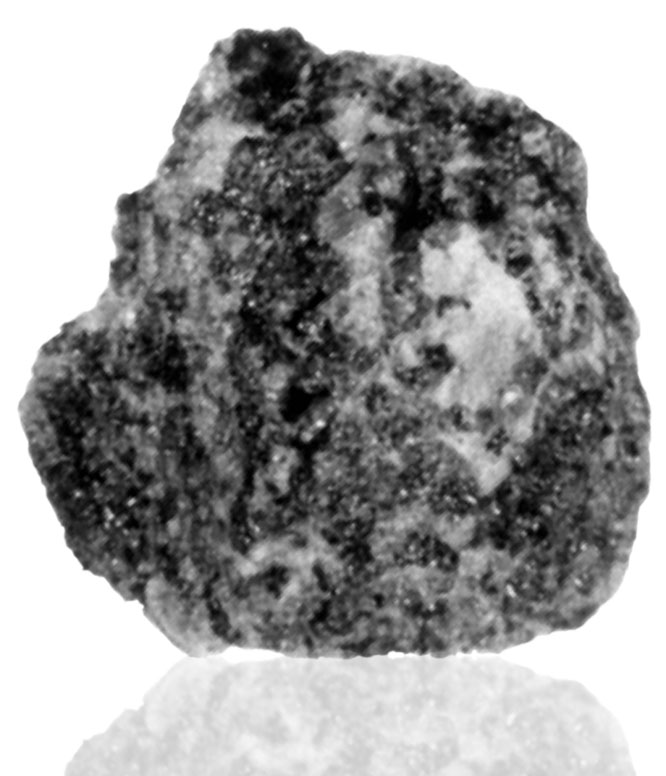
Fact sheet
70149 is a brownish grey, inequigranular, high-Ti mare basalt, containing vugs of 0.1 mm that was collected from a basaltic boulder named the "Geophone Rock". It is a coarse-grained poikilitic basalt with large plagioclase plates enclosing pyroxene and opaque minerals. Prismatic clinopyroxene has normal zoning; other forms show complex zoning. Olivine occurs in clusters of tiny anhedral grains in clinopyroxene. 70149 exhibits minor brecciation, but still maintains a poikilitic texture. Ilmenite is interstitial, either blocky or lath-like, set in plagioclase and pyroxene. The ilmenite contains chromite and rutile exsolution lamellae. Olivine forms cores to pyroxene. Minor mesostasis glass is present. Cristobalite, metallic iron and troilite form interstitial phases. A euhedral cristobalite crystal is shown in rotation 1.
The sample weighed 0.95 grams before analysis and has not been dated.
Further details of this and other Apollo samples are here: http://curator.jsc.nasa.gov/lunar/
Apollo 17, the final manned landing mission, had two objectives: to obtain samples of ancient rocks from the lunar highlands and to look for evidence of younger volcanic activity on the valley floor.
This small Collection contains material deriving from both periods, including igneous rocks around 4.3 billion years old from the lunar highlands as well as younger volcanic samples dating from about 3.6 billion years ago.
Apollo 17 was launched on 7 December 1972.






